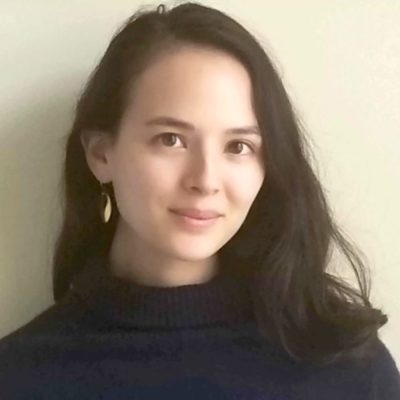
2020-21 Taylor/Blakeslee Fellows pursue science journalism in every medium
Five talented journalists endowed with multimedia skills and a determination to make a difference have been awarded prestigious Taylor/Blakeslee University Fellowships for 2020–21 from the Council for the Advancement of Science Writing to support graduate training in science writing.
Each will receive a $5,000 academic year award. Their selection brings to 172 the number of science writers aided by CASW’s graduate fellowships since 1981.
UPDATE: CASW is pleased to announce a late addition to the 2020–21 Taylor/Blakeslee University Fellowship group of awardees.

Saima Sidik (@SaimaMaySidik) left her job as an infectious disease researcher at the Whitehead Institute in Cambridge to attend the MIT Graduate Program in Science Writing beginning this fall. She has written for the MIT Biology Communications Department, the Whitehead Institute, and the Nature Microbiology Community website. With a graduate degree, Saima aspires to write for magazines and to work toward writing books. She hopes to “raise awareness of critical scientific issues, prompt readers to think more deeply about the world around them, and give others the joy and fascination that science gives me.” She holds a BS in biology from McGill University and an MS in microbiology and immunology from Dalhousie University. Saima replaces Taylor/Blakeslee Fellow Henry Baring, who is deferring his studies.
Chosen for the fellowships from a field of 29 outstanding applicants were:

Henry Baring (@HenryBaring) was selected for a master’s program at Northwestern University’s Medill School of Journalism. Throughout his undergraduate studies in materials science and nanoengineering at Rice University, he most enjoyed explaining science that impacts people’s lives. He created videos that communicate science through student voices and wrote science stories for university magazines and social media. Baring’s career goal is “to craft and convey narratives in video, writing, and throughout media that increase public trust and knowledge in science.” He sees himself one day creating videos for online news or magazines, producing science documentaries or television series, telling stories for institutions such as universities or museums, or pursuing other areas of science communication.

Winston Choi-Schagrin begins the Columbia Journalism School’s science program in the fall. As a state legislative reporter, she covered waste management, largely through a political lens. Now, she is pivoting to focus on public health and hopes to become a full-time investigative environmental science reporter. “I believe that effective, impartial and informed science writing can highlight to the public the significance of polluting industry and systems on their lives and communities,” she says. She has been published in The Philadelphia Inquirer, The New York Times, and Harper’s. She has an undergraduate degree in Chinese studies from Oxford University.

Kelso Harper (@kelso_harper) knew she wanted to apply her creative and artistic skills to her love of science after she completed a bachelor’s degree in chemistry at Johns Hopkins University. She wants to make a difference as science journalist and will attend MIT’s Graduate Program in Science Writing in the fall to focus on multimedia. “Amid the COVID-19 pandemic, science writing is more acutely critical than ever before,” she says. “The vital role communication plays in this global crisis only reinforces the final reason why I want to be a science writer: it makes an impact.” Harper is currently working on a multimedia project with Scientific American and the documentary news organization Retro Report and aspires to become a full-time multimedia science journalist.

Freda Kreier will enter the science communication program at the University of California at Santa Cruz this fall. Science, she says, “is often perceived by the public as somehow separate from themselves – the realm of super-geniuses and, often, villains.” She wants to change this perception. “I aim to be part of the next generation of journalists who empower the public to take ownership of science.” Kreier, whose experience includes working on the podcast SAPIENS, believes multimedia is key to inspiring greater public engagement with science and aspires to produce science content for audio and video productions. She holds a BA in molecular biology from Colorado College.

Niko McCarty (@NikoMcCarty) was pursuing a PhD in bioengineering at Caltech when he decided to follow his dream of being a science writer. “I feel that I can make the greatest impact by serving as a science communicator,” he says, “rather than as a scientist.”His ambition to be a “scientist-journalist” is driven by his desire to tell data-driven stories about discoveries in the natural sciences. McCarty will enter New York University’s Science, Health and Environmental Reporting Program (SHERP) in the fall. After he completes the program, he envisions putting his data collection and analysis skills to use to tell stories as a staff science writer and data visualizer. McCarty holds degrees in systems and synthetic biology from Imperial College London and in biochemistry from the University of Iowa.
CASW’s graduate fellowships are underwritten by a grant from The Brinson Foundation, a Chicago-based philanthropic organization. They honor the late Rennie Taylor and Alton Blakeslee, science writer and science editor respectively for the Associated Press.